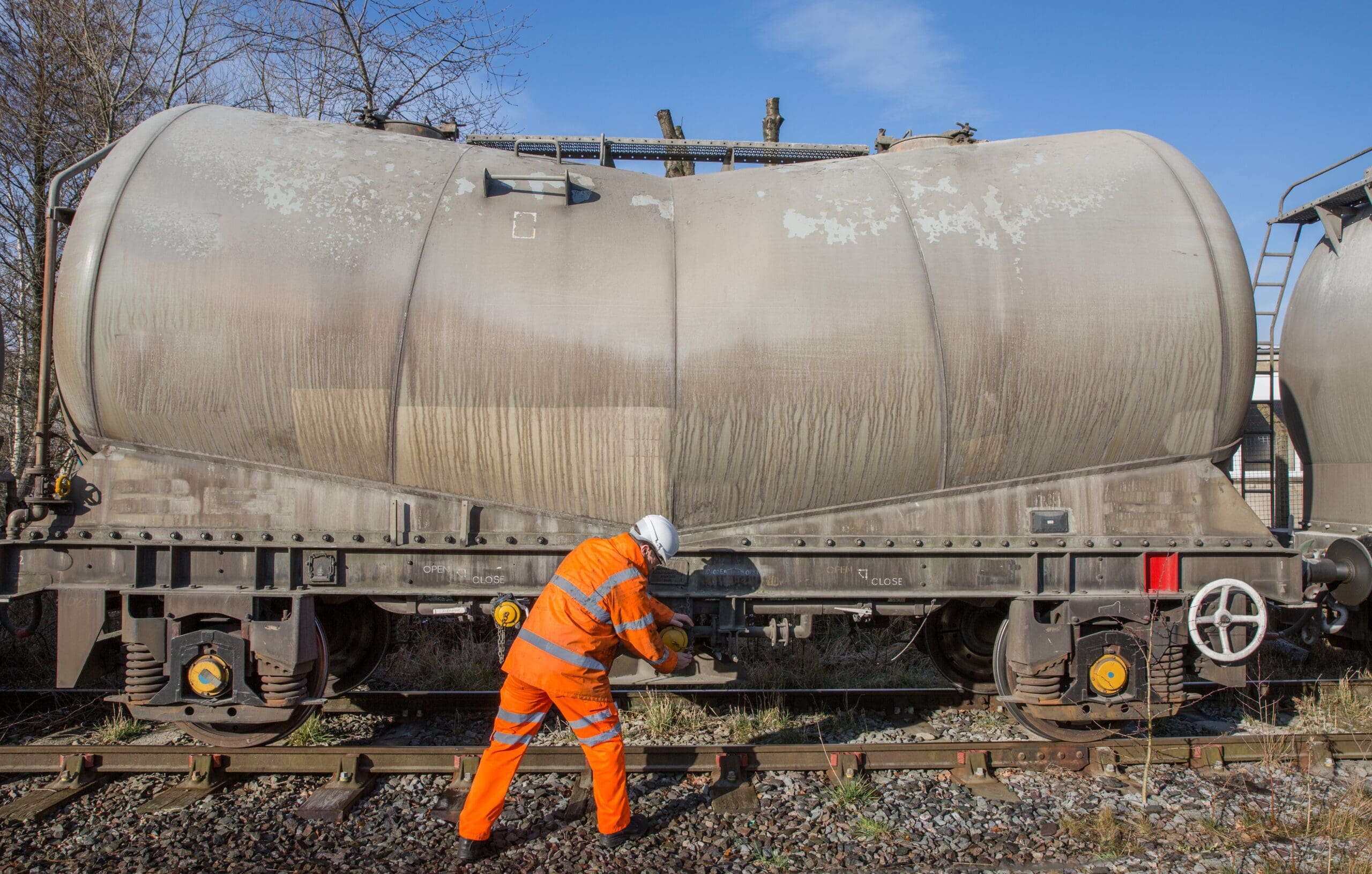10 Wrong Answers To Common Cancer Lawsuits Questions Do You Know The Correct Ones?
Railroad Cancer
Railroads burn millions of gallons diesel fuel to run freight trains on long distances. This extremely toxic diesel exhaust is high in carcinogens like arsenic and benzene.
 You may be qualified for compensation under the Federal Employers Liability Act (FELA) in the event that you are a railroad worker who has been diagnosed as having Cancer Lawsuit Settlements (https://sites.google.com/view/railroadcancersettlements). Our knowledgeable Houston railroad cancer lawyers can assist you to obtain fair financial compensation for your pain and suffering.
You may be qualified for compensation under the Federal Employers Liability Act (FELA) in the event that you are a railroad worker who has been diagnosed as having Cancer Lawsuit Settlements (https://sites.google.com/view/railroadcancersettlements). Our knowledgeable Houston railroad cancer lawyers can assist you to obtain fair financial compensation for your pain and suffering.
Benzene
Benzene is a solvent used in industrial processes that is found in the exhaust from diesel engines. Many railroad workers, including conductors, engineers, machinists and electricians work in areas in which they come in contact with diesel fumes.
One exposure to benzene can cause cancer in some people. It is known to cause acute meeloid leukemia (AML). The cancer develops in the bone marrow, and then spreads to blood. It is more prevalent in men than in women and can be fatal if left untreated.
The immune system can be damaged by benzene, which is why it’s a risk. This could lead to various health issues like infections and a lower ability to fight germs. Benzene may also cause bone weakness and increase the risk of arthritis.
Another serious issue associated with exposure to benzene is chronic myeloid leukemia (CML). The cancer forms start in the bone marrow, and expands into the blood. It may also affect the spleen or other organs in your body.
A study conducted in 2015 revealed that even the smallest amount of benzene may increase the risk of leukemia by 33. Researchers examined medical documents of 25,000 Norwegian oil workers on rigs who worked for at least 20 days.
Despite the danger of exposure to benzene in the workplace, it is still utilized in many commercial and industrial processes. Fortunately, there are ways to reduce exposure and avoid benzene poisoning.
Wearing protective eyewear and clothing is one of the ways to protect your eyes. This will stop benzene from getting in the nose and eyes. You should also wear a respirator whenever possible.
If you suspect you have been exposed, immediately consult your physician. This will help you identify any symptoms and reduce the risk of dying due to poisoning by benzene.
Benzene may also cause brain damage, in addition to other forms of cancer. It can cause confusion and loss of memory. If you are affected by this condition it can result in a decrease in your quality of life and make it difficult to function at home and at work.
Asbestos
Asbestos is a toxic mineral that has been known to cause many serious diseases including lung cancer as well as mesothelioma. It is found in a variety of substances used in construction, like pipe insulation and floor tiles.
As a result , asbestos exposure is among the greatest health risks for railroad workers. Railroad workers can be exposed to asbestos in a variety ways. Here are a few of the most common:
One exposure to asbestos can trigger mesothelioma and various other life-threatening cancers. These cancers may develop in the lungs, Cancer Lawsuit Settlements mesothelium (the membrane that surrounds the lung) and the abdominal cavity.
Most people who have been exposed to asbestos fibers will not develop any health issues that can be associated with this substance. Most fibers will be expelled through coughing or as mucus. This protects the lungs. However, there are a few types of asbestos fibers that will cling to your lungs and remain there for a long time or even decades.
Although the health effects of this condition are different from person-to-person, they can cause chest discomfort, shortness of breath as well as breathing problems tightness in the chest, and chest pain. Other symptoms include difficulty swallowing and weight loss.
Children exposed to asbestos are more at risk of developing mesothelioma and other types of cancer. They are more likely to breathe harmful fibers via the nose and mouth. Their lung’s are still developing.
They breathe in more asbestos fibers due to the fact that they breathe at a higher pace and have a greater surface area to volume ratio than adults.
Due to their vulnerability to inhaling harmful fibers, young children are at a particularly high chance of developing mesothelioma especially if they’ve been in close contact with railroad cars. They also are at a higher risk of getting this disease in the event of an individual in their family with mesothelioma.
Creosote
Creosote was developed in the 19th century in order to protect wood from insect and rot damage. Railroad companies were successful in saving money by reducing the cost of replacing wood. Even today, creosote remains used to treat wood products. It can also be used to protect log homes and marine pilings.
It is a poisonous substance and has been linked with numerous cancers. These include esophageal, lung and larynx cancers.
The health risks of creosote-related exposure are especially significant for those working in the wood preservation, coke-production and Cancer Lawsuit Settlements asphalt industries. Chimney sweeps, as well as those who perform physical labor, such as rail track maintenance and construction could also be exposed to creosote.
Creosote exposure can lead to irritation of the skin and eyes chemical burns, eyelid spasms convulsions, mental confusion, unconsciousness, kidney problems, and death. It can also affect the lungs and cause respiratory problems in the long run, similar to smoking cigarettes.
Creosote, a chemical made from coal tar, may be absorbed through the skin. It can also be taken in through food items that are contaminated or water.
Railroad workers are exposed to creosote if they work near hazardous waste sites. These sites usually contain large quantities of creosote. This can cause contamination of water, soil and the air.
Rail workers could also be exposed to creosote when they work in the wood treatment sector. Many wood products, including fences and lumber are treated with creosote.
The people who work in these industries are usually not protected with the proper equipment, and this exposes them to creosote , as well as other contaminants. This can cause serious health issues like chronic fatigue syndrome and cancer.
Creosote, an oily liquid with a burning, bitter taste, is amber-black in color. It isn’t a contaminant in liquids and has an SG of 1.037 to 1.87. It is a mixture of polycyclic aromatic hydrocarbons phenolic compounds, and other chemicals. While coal tar is the most common form, various forms of creosote also exist.
Diesel Exhaust
Diesel exhaust is a by-product of fuel combustion that is released into the air when you operate vehicles with diesel engines. Diesel exhaust can also be released by diesel locomotives, construction equipment, farm equipment, generators and other industrial equipment.
People who work around diesel exhaust may be more at chance of developing cancer. This is because they are more susceptible to exposure than those who work in other sectors.
Some research shows that exposure to diesel exhaust could cause lung cancer in lab animals, such as rats. Diesel exhaust can cause DNA modifications in cells, making them more susceptible to cancerous growth.
Studies on diesel exhaust in humans have also identified a variety of health problems , including respiratory disorders such as emphysema and chronic bronchitis and blood system diseases such as bladder cancers, voice box, stomach, pancreas and stomach. Some cancers of prostate, stomach, and breast have been connected to diesel exhaust.
Diesel exhaust is considered carcinogens according to the American Cancer Society. It is classified as such in the International Agency for Research on Cancer (part of the World Health Organization).
The exposure to diesel exhaust can cause serious health risks to employees who work with big engines and machines, including truck drivers or operators of toll booths. They could also be at risk when they spend a lot of time in areas where heavy diesel traffic happens in such places as highways or cities.
In addition, railroad workers who maintain and build yards and tracks may be exposed to diesel fumes while they work near engines or other equipment that runs on diesel engines. The fumes can pose a risk in the cabins of locomotives and other equipment.
Long-term diesel exhaust exposure caused lung cancers and inflammation in laboratory rats. Some of these tumors were comparable to lung adenocarcinoma. This is a type of cancer that occurs when cells in the lungs expand rapidly and then become malignant.
 If you have been diagnosed with cancer and employed in the railroad sector, you may be able to claim compensation against your former employer. To be able to do this you must consult with a lawyer for railroad cancer.
If you have been diagnosed with cancer and employed in the railroad sector, you may be able to claim compensation against your former employer. To be able to do this you must consult with a lawyer for railroad cancer. An experienced FELA lawyer can help make a convincing case against the employer to get you the compensation you are entitled to. If you have been diagnosed with cancer, you need to seek out a skilled legal professional who will fight for the highest amount of damages you can for your particular situation.
An experienced FELA lawyer can help make a convincing case against the employer to get you the compensation you are entitled to. If you have been diagnosed with cancer, you need to seek out a skilled legal professional who will fight for the highest amount of damages you can for your particular situation.